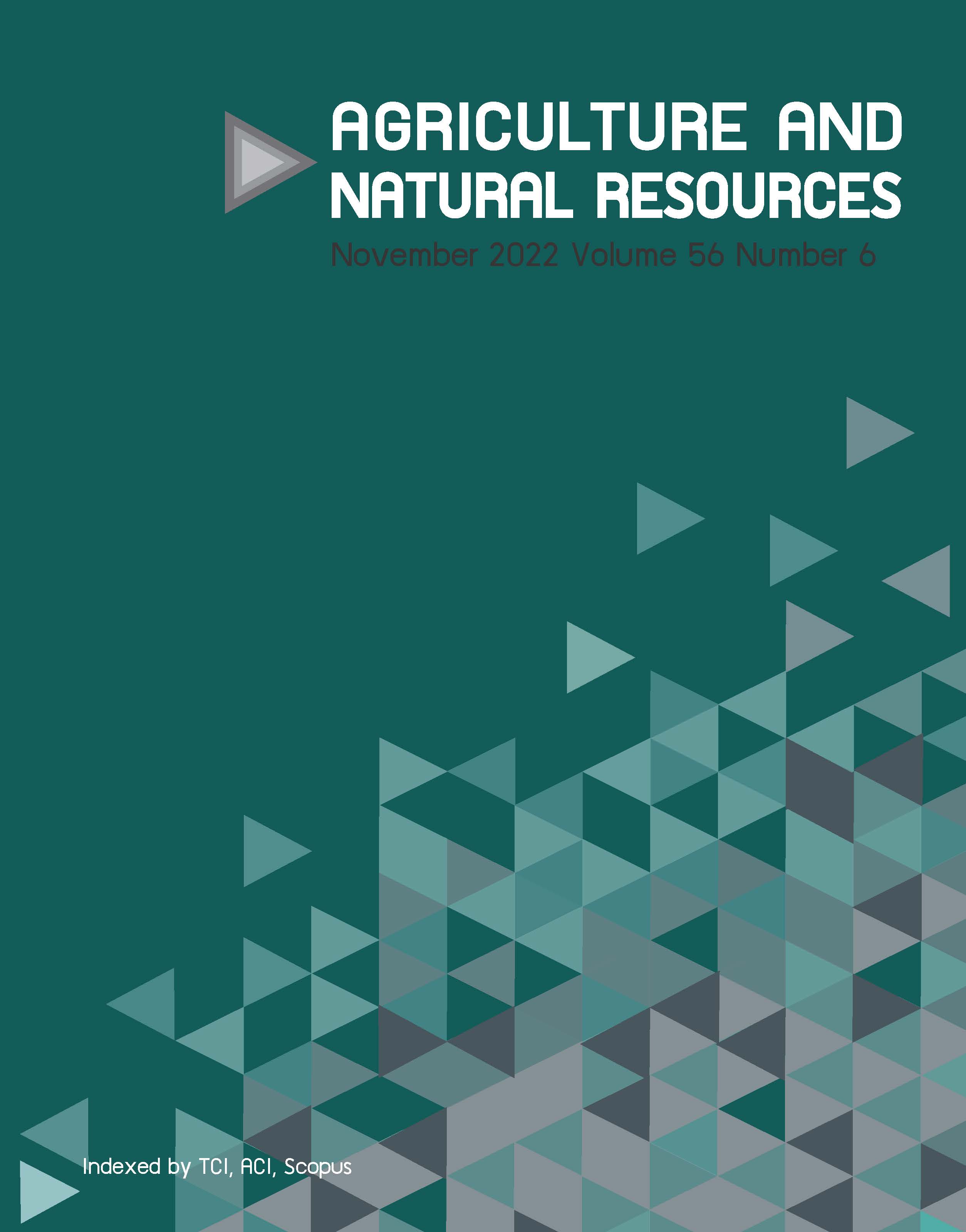Effect of water deficit and propagation methods on physiological responses of Robusta coffee (Coffea canephora) varieties
Keywords:
Coffea canephora, Drought, Grafting, Leaf gas exchange, Plant water statusAbstract
Importance of the work: Drought is a major issue for Robusta coffee production. However, data on the physiological response of Robusta coffee to water deficit are limited.
Objectives: To determine effect of water deficit and propagation methods on the physiological characteristics of Robusta coffee and to investigate relationships among the physiological characteristics of Robusta coffee.
Materials & Methods: Three varieties of Robusta coffee and different propagation methods were evaluated under control and water deficit conditions. Plant water status, leaf gas exchange and the soil-plant analyses development (SPAD) index were all measured.
Results: Water deficit reduced plant water status and leaf gas exchange characteristics—impaired photosynthesis (Pn) via reduced stomatal conductance (gs) and transpiration (E), water use efficiency (WUE), light-adapted quantum efficiency of PSII (ΦPSII)
and electron transport rate (ETR)—in Robusta coffee but did not affect the SPAD index. The physiological responses to Robusta coffee differed depending on the propagation method. Cutting-propagated Robusta coffee had a higher rate of leaf gas exchange than seeded and grafted Robusta coffee. Robusta coffee had physiological differences between varieties. For the SC05 variety, both the grafting and cutting methods had the highest potential for leaf gas exchange under water-stressed conditions. Furthermore, a relationship among leaf gas exchange characteristics was found (correlation coefficient, r = 0.74** to 1.00**). Leaf gas exchange and leaf water status were also related (r = 0.86** to 0.93**).
Main finding: There was a physiological response to water deficit of Robusta coffees propagated using different methods, with a relationship among the physiological characteristics of Robusta coffee under water deficit conditions.
Downloads
Published
How to Cite
Issue
Section
License
Copyright (c) 2022 Kasetsart Universityonline 2452-316X print 2468-1458/Copyright © 2022. This is an open access article under the CC BY-NC-ND license (http://creativecommons.org/licenses/by-nc-nd/4.0/),
production and hosting by Kasetsart University of Research and Development Institute on behalf of Kasetsart University.







